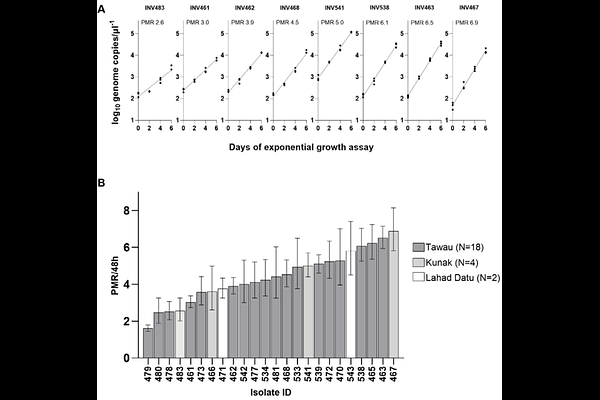Intrinsic multiplication rate variation of Plasmodium falciparum (in clinical isolates prior to elimination in Malaysia

Intrinsic multiplication rate variation of Plasmodium falciparum (in clinical isolates prior to elimination in Malaysia
Stewart, L. B.; Lantero Escolar, E.; Philpott, J.; Cox-Singh, J.; Singh, B.; Conway, D.
AbstractReplication rates and virulence of pathogens are hypothesised to evolve in response to varying intensity of transmission and competition among genotypes. Under exponential growth conditions in culture, clinical isolates of the malaria parasite Plasmodium falciparum have variable intrinsic multiplication rates, but comparisons of samples from different areas are needed. To analyse parasites from an area of low endemicity, Malaysian clinical isolates cryopreserved prior to malaria elimination were studied. The mean and range of P. falciparum multiplication rates in Malaysian isolates was no less than that seen among isolates from more highly endemic populations in Africa, which does not support a hypothesis of adaptation to prevailing levels of infection endemicity. Moreover, the distribution of multiplication rates was similar between isolates with single parasite genotypes and those containing multiple genotypes, which does not support a hypothesis of facultative adjustment to competing parasites. Based solely on clinical isolates, the findings indicate that parasites may not evolve lower multiplication rates under conditions of reduced transmission, and that the virulence potential is likely to be undiminished in pre-elimination settings. This encourages efforts to eliminate endemic infection completely, as has been achieved at the national level in Malaysia.